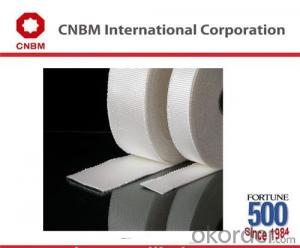Double-sided tape is a versatile adhesive solution that has found its way into various industries, including electronics. It’s a simple yet effective way to bond components together without the need for screws or other fastening methods. But when it comes to electronics, there’s one critical factor that can make or break the effectiveness of your double-sided tape: heat resistance.
The Importance of Heat Resistance
In the world of electronics, components are often subjected to high temperatures during manufacturing processes, as well as in their regular operation. This is where heat resistance comes into play. A double-sided tape that can withstand high temperatures will ensure that your electronic devices remain functional and reliable over time.
Imagine you’re working on a project that requires a high-performance adhesive. You’ve got your components all lined up, and you’re ready to put everything together. But then you realize that the tape you’re using isn’t heat resistant. The result? A failed project and a lot of frustration.
Types of Double-Sided Tapes
There are several types of double-sided tapes available in the market, each with its own set of properties. Some are designed for general use, while others are specifically engineered for high-temperature applications. Here’s a quick overview of the types you might come across:
– Acrylic-based tapes: These are the most common type of double-sided tapes. They offer good adhesion and are suitable for a wide range of applications. However, they may not be the best choice for high-temperature environments.
– Silicone-based tapes: Known for their excellent heat resistance, silicone-based tapes can withstand temperatures up to 500°F (260°C). They are ideal for use in harsh conditions and are often used in automotive and aerospace industries.
– Foam tapes: These tapes are made from a foam material that provides both cushioning and insulation. They are not specifically designed for high-temperature applications but can be used in moderate temperature environments.
Choosing the Right Tape
When selecting a double-sided tape for your electronics project, it’s essential to consider the specific requirements of your application. Here are a few factors to keep in mind:
– Temperature range: Determine the highest temperature your components will be exposed to during both manufacturing and operation.
– Adhesion strength: Consider the weight and material of the components you’re bonding. You’ll need a tape with sufficient adhesive strength to hold everything in place.
– Material compatibility: Ensure that the tape you choose is compatible with the materials of your components to avoid any化学反应 or degradation over time.
– Longevity: Look for tapes that offer long-term durability and maintain their adhesive properties even after exposure to heat.
Real-World Applications
Let’s take a look at some real-world scenarios where heat-resistant double-sided tapes have made a difference:
– Automotive industry: In cars, electronic components are often exposed to high temperatures, especially under the hood. Heat-resistant tapes are used to secure sensors, connectors, and other components, ensuring they remain in place and function properly.
– Medical devices: Many medical devices operate in environments where they are subjected to heat during sterilization processes. Heat-resistant tapes are crucial for maintaining the integrity and functionality of these devices.
– Aerospace: The aerospace industry relies heavily on electronics that can perform reliably in extreme conditions, including high temperatures. Double-sided tapes that can withstand these conditions are essential for securing components in place.
DIY Projects and Heat Resistance
Even if you’re not working on a professional electronics project, heat resistance can still be a crucial factor for your DIY endeavors. Whether you’re building a custom PC or creating a unique electronic gadget, using a heat-resistant tape can save you from headaches down the line.
The Bottom Line
When it comes to double-sided tapes for electronics, heat resistance is not just a nice-to-have feature; it’s a necessity. By choosing the right tape for your project, you can ensure that your electronic devices will perform at their best, even in the face of high temperatures. So, the next time you’re in the market for double-sided tape, don’t forget to consider the heat resistance factor. It could be the difference between a successful project and a costly mistake.

